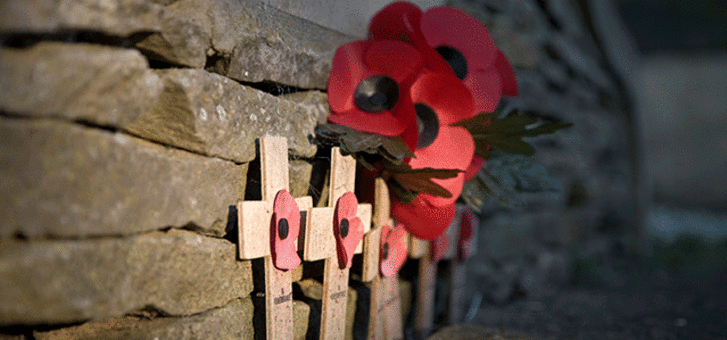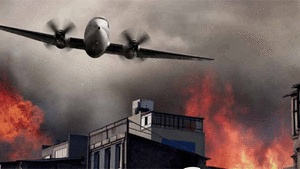This month marks the one hundredth anniversary of the outbreak of the First World War. Men either volunteered or were conscripted by the millions and sent to countries many had never heard of.
It was the first global struggle, and it changed the world completely. By the end of that war, there were few people in the countries that participated who remained unaffected.
Food shortages were everywhere—some deliberately inflicted as a result of blockades and some due to failed harvests—which further weakened the people who remained at home.
Nearly six million civilians died from disease and starvation. Another million were killed as a direct result of military operations. Over nine million soldiers died as a result of the fighting. In all, an estimated 16 million people died.
Then there were the wounded. More than 20 million. Some recovered, but many others were never the same again, either in body or mind.
The impact of the war wasn’t just about the people who died. The war redrew the world map. Both the Austro-Hungarian and Turkish Empires were destroyed. From their ashes, new countries emerged. Russia suffered a revolution that led to the establishment of the world’s first communist state. The United States led the development of the League of Nations (replaced in 1945 by the United Nations), which it later chose not to join. Many of these political changes are still in place today and the effects are being felt 100 years later.
The immediate trigger for World War I was a single shot: on June 28, 1914, the Archduke Franz Ferdinand of Austria was assassinated while visiting the Bosnian capital of Sarajevo. The diplomatic aftermath resulted in a patchwork of alliances that brought one country after another into the burgeoning conflict.
The fighting finally ended with an armistice in 1918 but by this time, Europe was in ruins and the seeds of the next world war were already beginning to sprout.
“The First World War is nothing to be jubilant about—for anyone,” says Karl von Habsburg, great-grandnephew of the slain archduke. “Where is the fault for this war? It is the fault of strong nationalism.”
Starting this month, the commemoration of World War I will go on for the next four years but it isn’t meant to politicise the conflict. As Hew Strachan, an Oxford historian who has been involved in the planning of the First World War Centenary, says, “The decision to avoid any sense of celebration or triumphalism is absolutely there at the heart of what everyone is doing. The keyword is commemoration.”
World War I was called “the war to end all wars” and also the Great War. People thought that if the Allies won, there would never be war again. History, of course, tells us that they were tragically wrong.
The lesson from all of the wars the world has seen, however, is clear: If people don’t learn to get along, there will never be world peace. Fighting wars does not solve problems and does not guarantee that new wars won’t start. Wars only create bloodshed and deaths. When we think of the consequences on families who have lost loved ones and the holes left in communities as a result of war, it is a very sad picture.
At the same time, it is interesting to note that while many were saying that World War I was the war to end all wars, some 2000 years before, Jesus had predicted something very different.
Talking about the end of the world, Jesus told His disciples there would be certain signs to look for. One of the very first is war: “You will hear of wars and rumours of wars, but see to it that you are not alarmed. Such things must happen, but the end is still to come. Nation will rise against nation, and kingdom against kingdom. . . . All these are the beginning of birth pains” (Matthew 24:6–8; underline added).
Jesus said that the signs of the times, like wars, earthquakes, famines and pestilences, will intensify before He returns. But He also said they were only the “beginning of birth pains.” It presupposes that there will be more and more wars and disasters as the end of the world—and His promised return—gets closer.
Peter Young, a professor at the Royal Military Academy in Sandhurst, England, notes that World War I “took the lives of twice as many men as all the major wars from 1790 to 1913 put together.”
It is hard to comprehend that just 20 years after World War I, the world would be plunged into another world war that caused even greater human and material losses than the first one, or any other previous war. More than 60 million civilians and military personnel—2.5 per cent of the world’s population then—died by the end of World War II.
No other war caused as much damage to key industries and cities as did the bombing and artillery fire to cities like Berlin, Dresden, Warsaw, Budapest, Hiroshima, Tokyo, London and Milan. Never before had humankind witnessed global devastation on such a massive scale. The sheer enormity and destructiveness of these two world wars, which caused more casualties and suffering than all the previous wars of history combined, represent a remarkable fulfilment of the predicted intensification and expansion of war before Jesus returns.
Over the past 100 years, have we learned how to avoid future global confrontation? The increasing social, economic and political tensions combined with the growth of conventional and nuclear weapons could easily drag the world into another global conflict.
Today, the “secular prophets” who speak of the end of the world are usually messengers of doom and gloom. They see no bright future. However, the biblical prophets see in these conflicts and tensions a precursor of the Lord’s return to bring an end to sin—the cause of war—and establish a new world order in which dwells peace and harmony.







